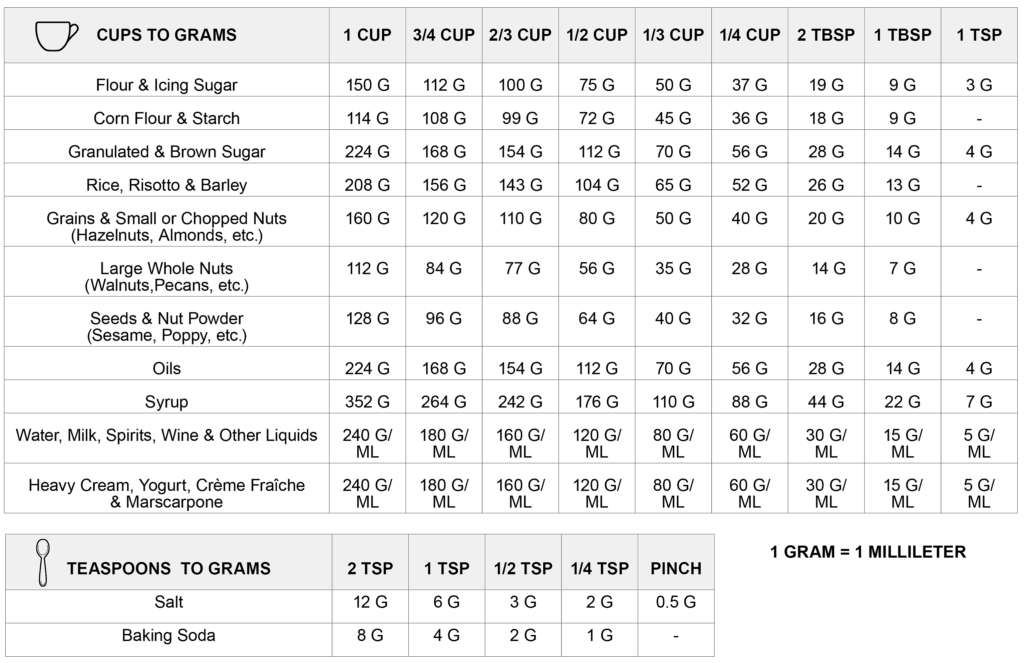


But that difference becomes much more noticeable when you consider a gallon of milk, which in the US is 3,785 ml versus 4,546 ml in Britain. If your density is not in g/ml, you will need to. The difference in a teaspoon of vanilla would be hard to measure even if you tried. To convert cups to grams, multiply your cups figure by 236.588 and again by the ingredient density (in g/ml). For example, a US contemporary teaspoon is 4.93 ml compared to 5 ml in the Britisth Imperial System teaspoon. These differences are small when the amounts are small, but can really add up for larger volumes. Even within the US, there are differences between the US contemporary system and that used by the US Food and Drug Administration. To add to the confusion, these systems all use the same names, such as pints and quarts, to mean slightly different measurement amounts. Some English-speaking countries, including the United States, United Kingdom, and Australia, use measurement systems that originated from an old system called “English units”. Most countries use the metric system (officially known as the International System of Units), where every unit is defined using a measurable phenomenon, such as the distance light travels in a second. US cups of all purpose flour to grams 1 / 4 US cup of all purpose flour 30 grams: 0.26 US cup of all purpose flour 31.2 grams: 0.27 US cup of all purpose flour 32.4 grams: 0.28 US cup of all purpose flour 33.6 grams: 0.29 US cup of all purpose flour 34.8 grams: 0.3 US cup of all purpose flour 36 grams: 0.31 US cup of all purpose. For other substances, the density will be different, and each teaspoon will weigh a different number of grams. Water has a density of 1 g/ml, so the conversion is 1 gram to 1 millileter, which is equivalent to 0.2 teaspoons. He's likely to be not human enough. The correct conversion depends on the density of the item you're measuring. The answer is: 1/4 US cup of table salt is equivalent to 72 grams() Volume to 'Weight' Converter Volume Weight Weight Volume Gas Mark Quote of the day. Grams are a measure of mass, and teaspoons measure volume. For example, the weight of 1 cup of all-purpose flour varies from about 100 grams if sifted to 150 grams if scooped. Though the exact nutritional values vary depending on how sunflower seeds are cooked and flavored, 1 ounce (28 grams, or roughly 1/4 cup) of shelled. If you're looking for a grams-to-teaspoons conversion chart, you won't find one here. Make sure to sift your coconut flour as it's prone to getting lump 1 tablespoon.


 0 kommentar(er)
0 kommentar(er)
